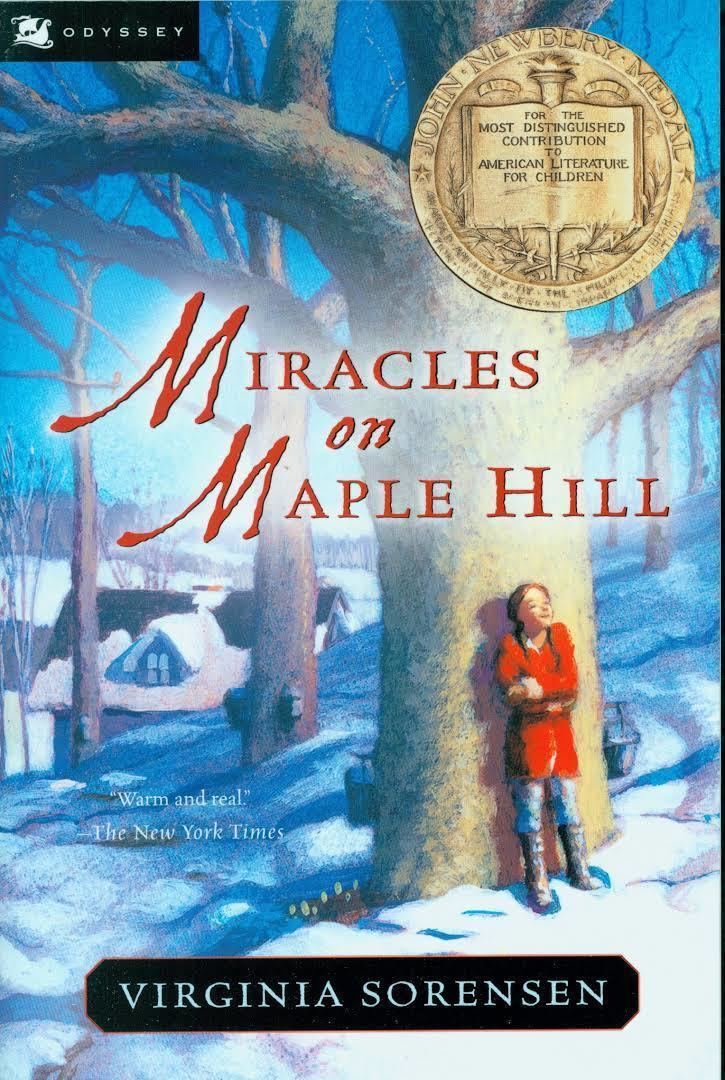7.8 /10 1 Votes7.8
4.1/5 Barnes & Noble Cover artist Beth and Joe Krush Language English Pages 180 Publisher Harcourt | 3.8/5 Goodreads Illustrator Beth and Joe Krush Country United States Publication date 1956 Originally published 1956 Page count 180 | |||||||||||||||||||||||||||||||||
 | ||||||||||||||||||||||||||||||||||
Similar Virginia Sorensen books, John Newbery Medal winners, Children's literature | ||||||||||||||||||||||||||||||||||
annie get your gun scene from miracles on maple hill
Miracles on Maple Hill is a 1956 novel by Virginia Sorensen that won the 1957 Newbery Medal for excellence in American children's literature. The book was illustrated by Beth and Joe Krush.
Contents
- annie get your gun scene from miracles on maple hill
- Summary
- Plot
- Main characters
- Minor characters
- Audiobook
- In popular culture
- Description
- Critical reception
- References
The settings and characters for the book were inspired by real people and locations the author encountered during her stay in Edinboro, Pennsylvania between 1952-1958.
Summary
Marly's family moves to the country so that her father, a former prisoner of war, can learn to function once more. They are supported by a neighbor couple, Mr. and Mrs. Chris, who make their living with maple syrup. Marly and her brother adapt to living in the country, and eventually become happier there. Their father's condition also improves dramatically.
Plot
Marly, her parents, and her brother go to a place where their grandmother once lived called Maple Hill. There the people are so nice to each other that they know everybody's name, and they are very kind to each other. They help each other when any help is needed. It is unlike the city, where people barely talk to each other and like to gossip behind others' backs. Therefore, it is very easy for people to feel tired and upset. Marly's father is back from the war, suffering from mood swings and depression, and seems to be tired all the time. Lee, Marly's mother, decides to moves to Maple Hill so that her father will not suffer as much as in the city and will be able to get back to normal. They are supported by a neighbor couple, Mr. and Mrs. Chris, who make their living with maple syrup. Marly and her brother adapt to living in the country very well, and eventually become happier there. Their father's condition also improves dramatically.
When Mr. Chris has a heart attack during sugaring time, Marly's family steps forward to return the kindness that the Chrises have shown them. They collect the entire crop of sap and boil it down, but they are certain that they lack Mr. Chris's deft touch with making syrup. When Mr. Chris is allowed to return home, it is the moment of truth: is their syrup as good as Mr. Chris's? Mr. Chris himself is unable to detect any difference. Marly reflects that the recovery of her father and Mr. Chris, the growing strength of bonds within her family, and the second chances for life and love are the true miracles of Maple Hill.
Main characters
Minor characters
Audiobook
A full cast audio adaptation narrated by Cynthia Bishop was released in 2005 with each character brought to life by a unique personality and voice.
In popular culture
The Hurry Hill Maple Farm Museum located in Edinboro, Pennsylvania has an exhibit dedicated to the book and its author, titled "Miracles on Maple Hill: Where the seasons take on new meaning."
Description
The story, written by Virginia Sorensen, is told in past tense and uses the third person. The words used are simple and easy to understand. They are mostly conversations between Marly and her family, as well as other people in the countryside of Maple Hill. This story includes fourteen chapters and each chapter is very short. The total pages are less than 250.
Critical reception
Miracles on Maple Hill was published to very strong reviews. Kirkus Reviews called it "a complete and realistic family story", while the School Library Journal found it "skillfully dramatized" and an "inspiring American classic". The New York Times Book Review called the book "Warm and real as her two previous books centering about a 10-year-old 'curious Missle' and 'Plain Girl'-this one packed with incident, country magic, family love and people to remember; it has substance and spiritual worth." In a retrospective essay about the Newbery Medal-winning books from 1956 to 1965, librarian Carolyn Horovitz wrote that the book "seems to miss its objective because of a sentimental use of language. I know this author has written better books."
